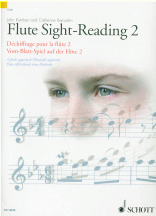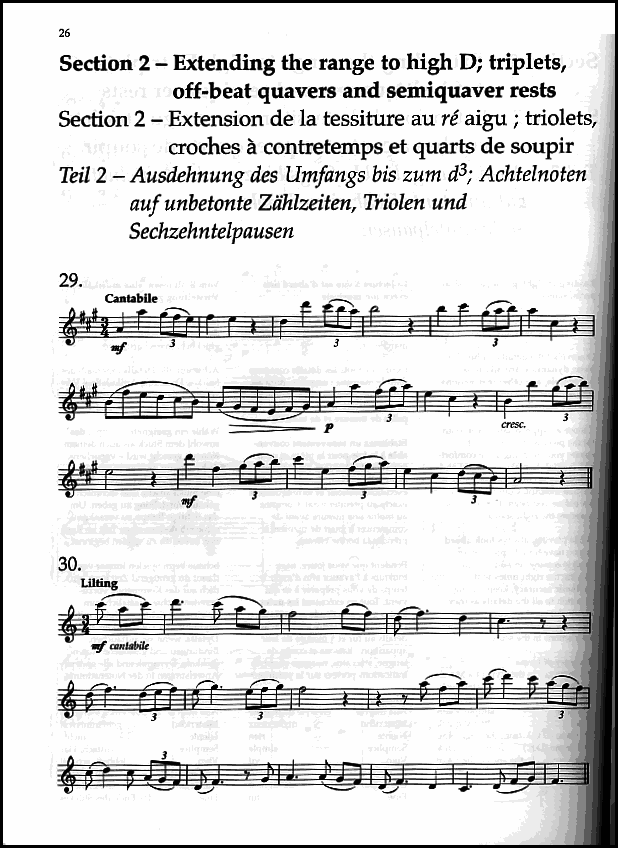Flute Sight-Reading 2
Schott ED 12818
ISMN M-2201-2379-5

Flute Sight-Reading 2 aims to build on the sight-reading skills learnt in book 1. There are five sections in increasing development. The emphasis is on providing idiomatic tunes and structures rather than sterile sight-reading exercises.
First published in 2006, Flute Sight-Reading 2 is intended for Grades 4 to 8. It has 142 original tunes on 92 pages.
Price £14.99
Each section begins with several solo examples and concludes with duets and accompanied pieces, enabling the player to gain experience of sight-reading within the context of ensemble playing.






























